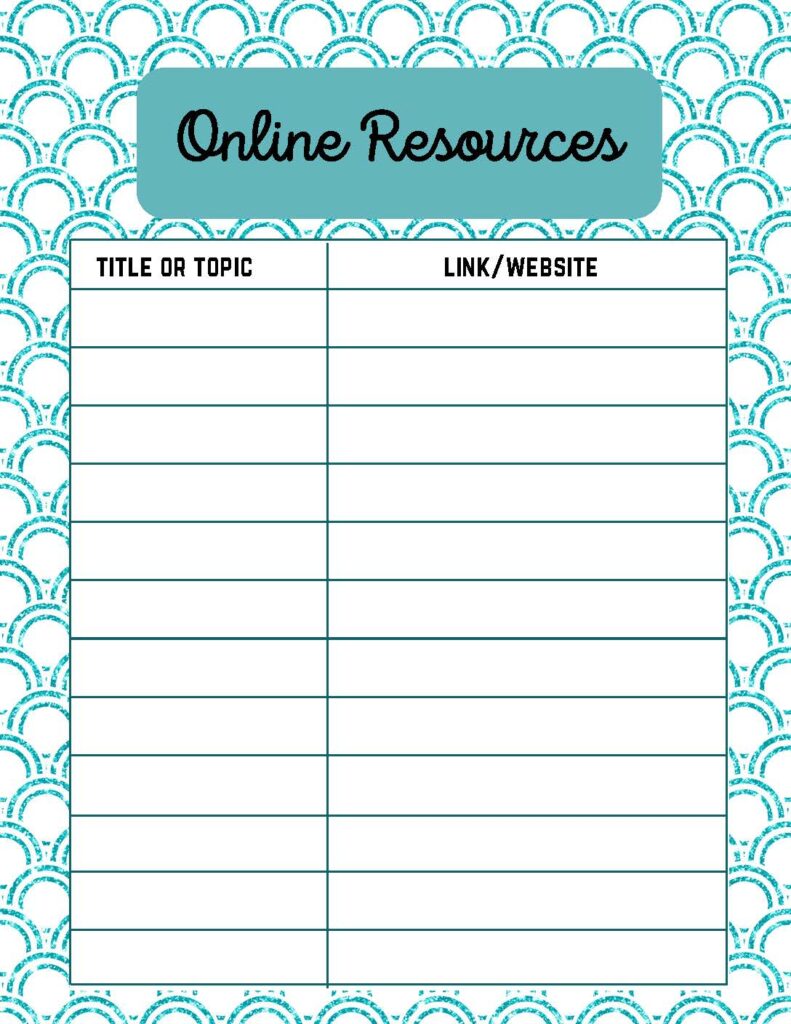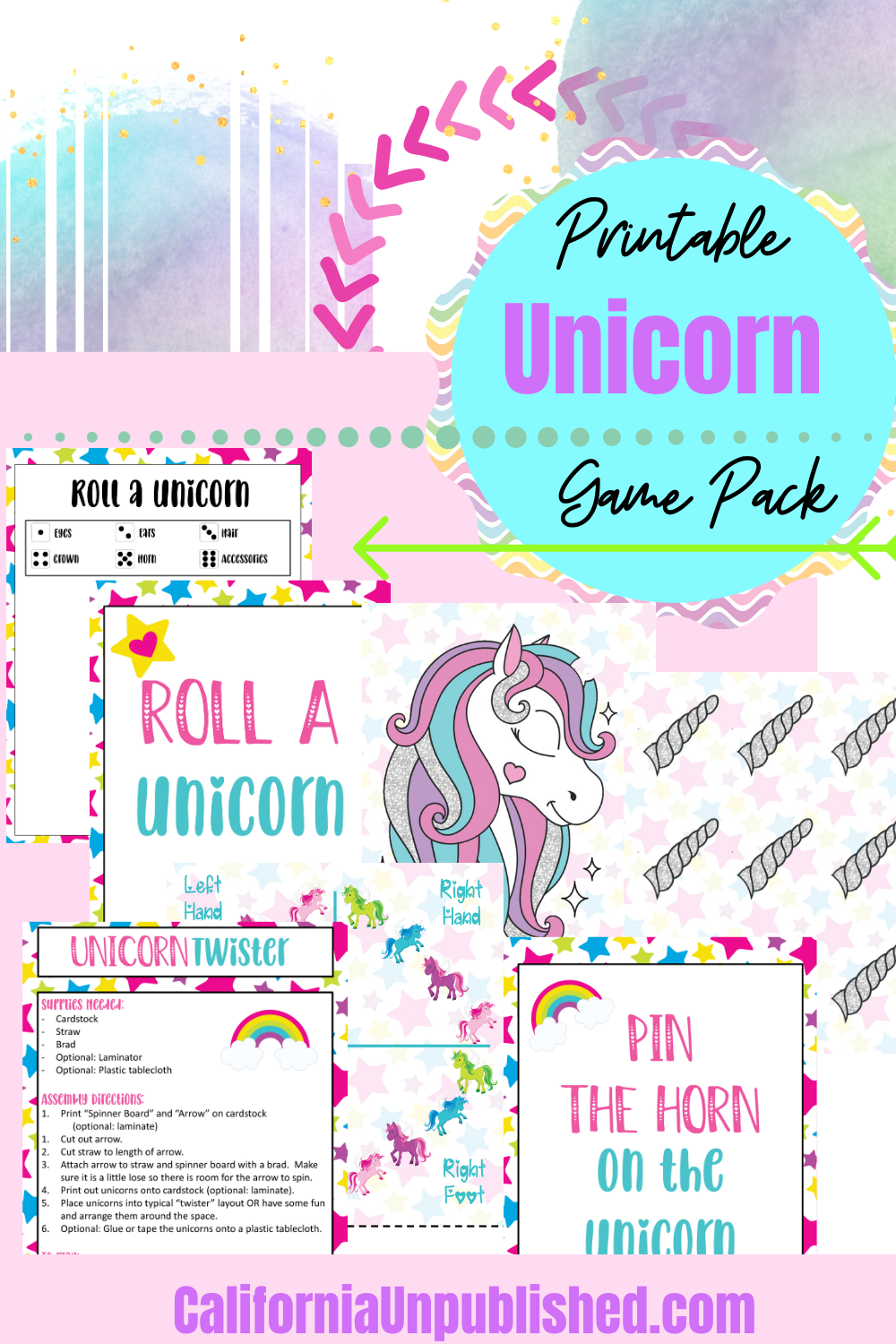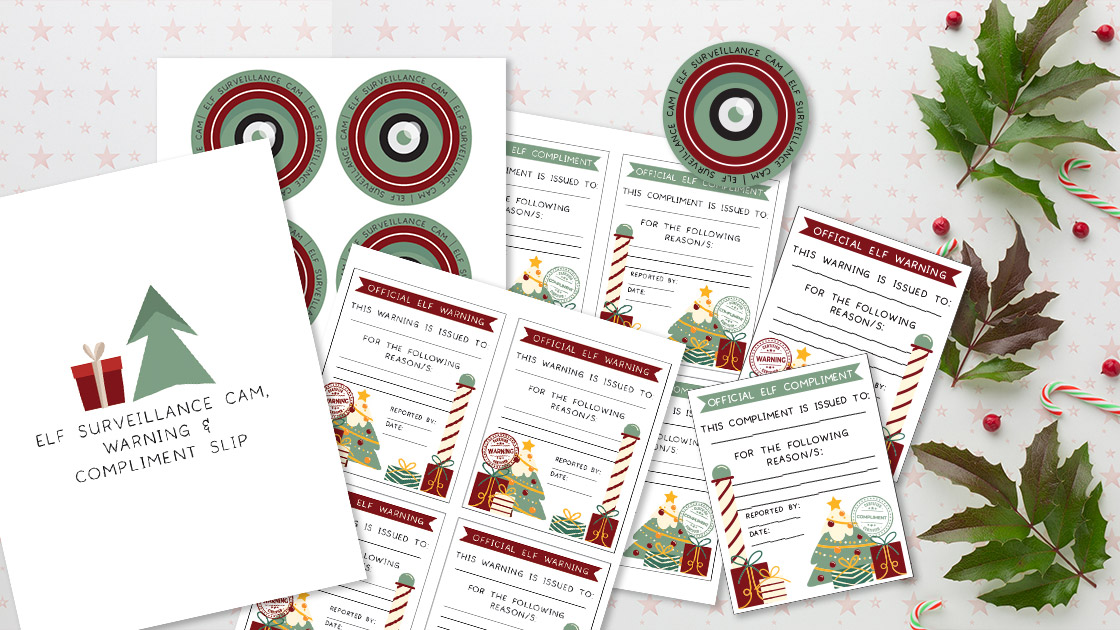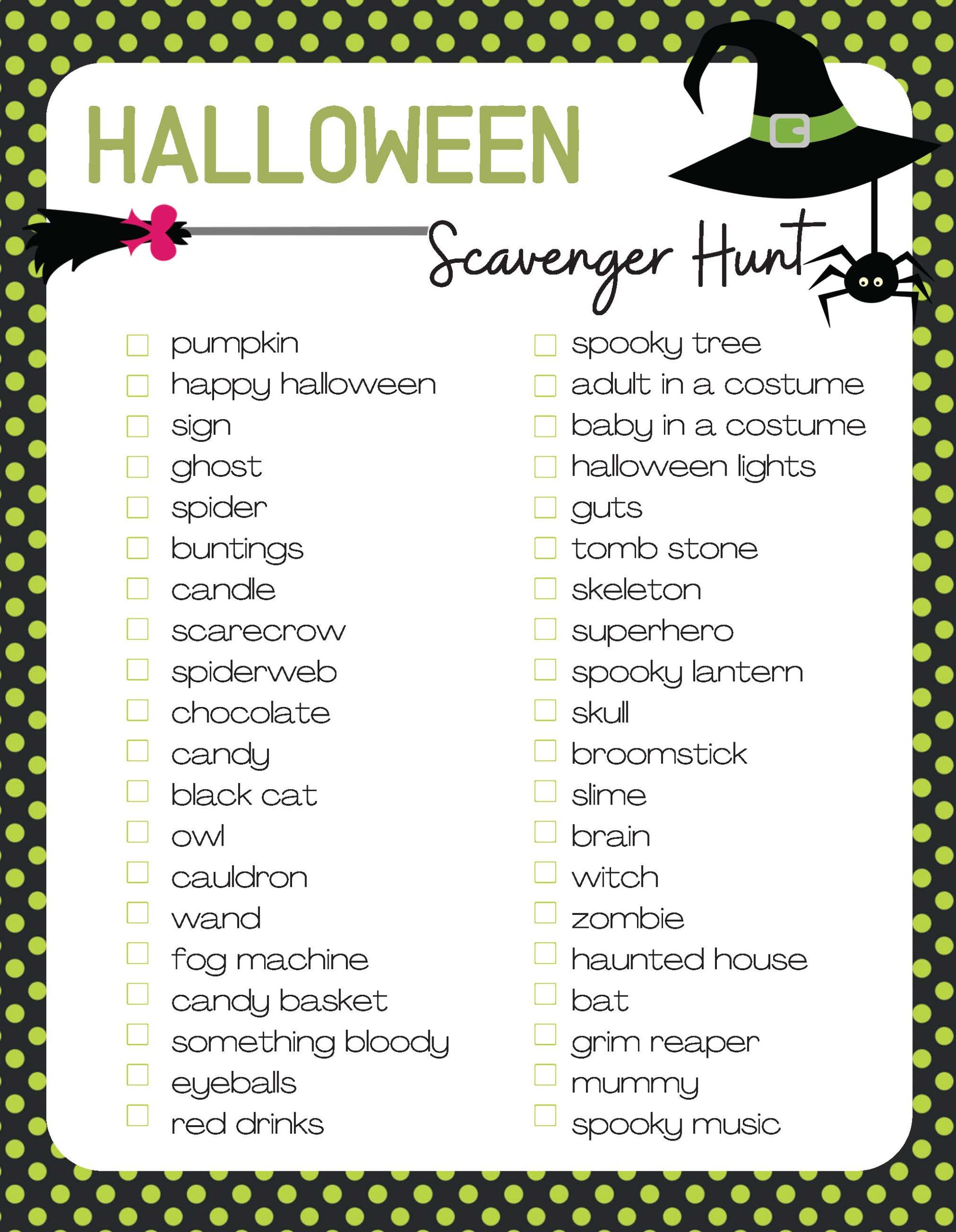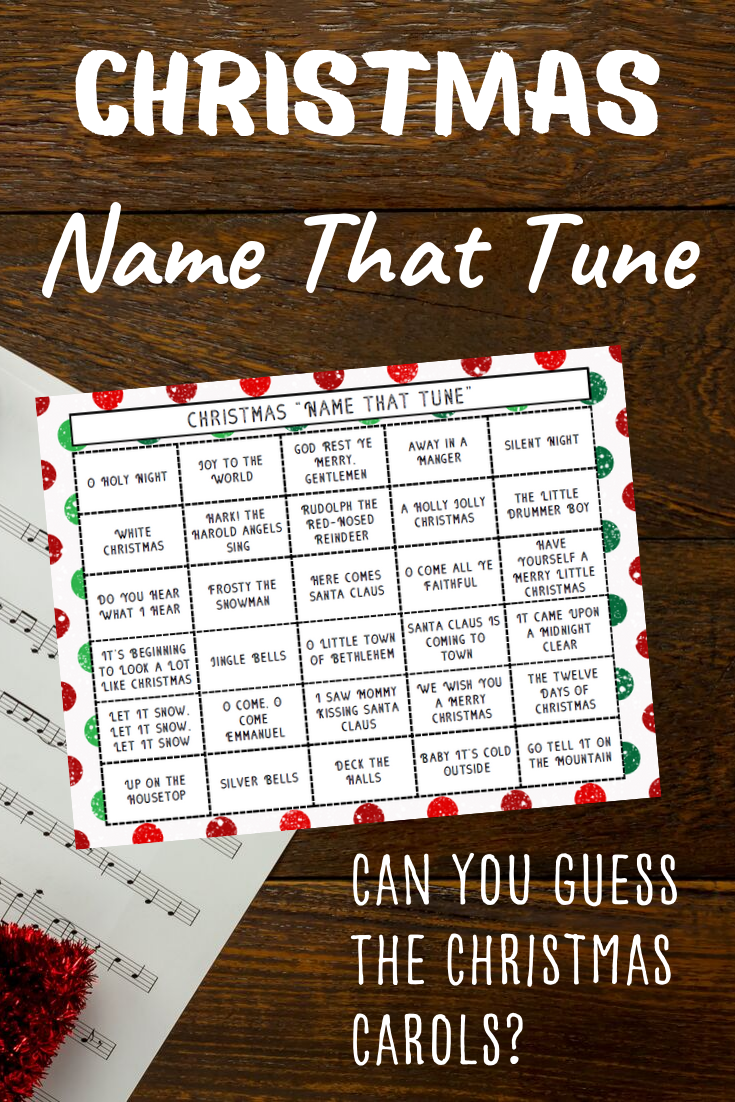Free Printable Homeschool Planner: Organize Your Child’s Education with Ease
Are you tired of juggling multiple schedules, lesson plans, and activities for your homeschooling journey? We've got you covered with our free printable homeschool planner. This comprehensive tool is designed to help you stay organized, focused, and on track throughout the school year.
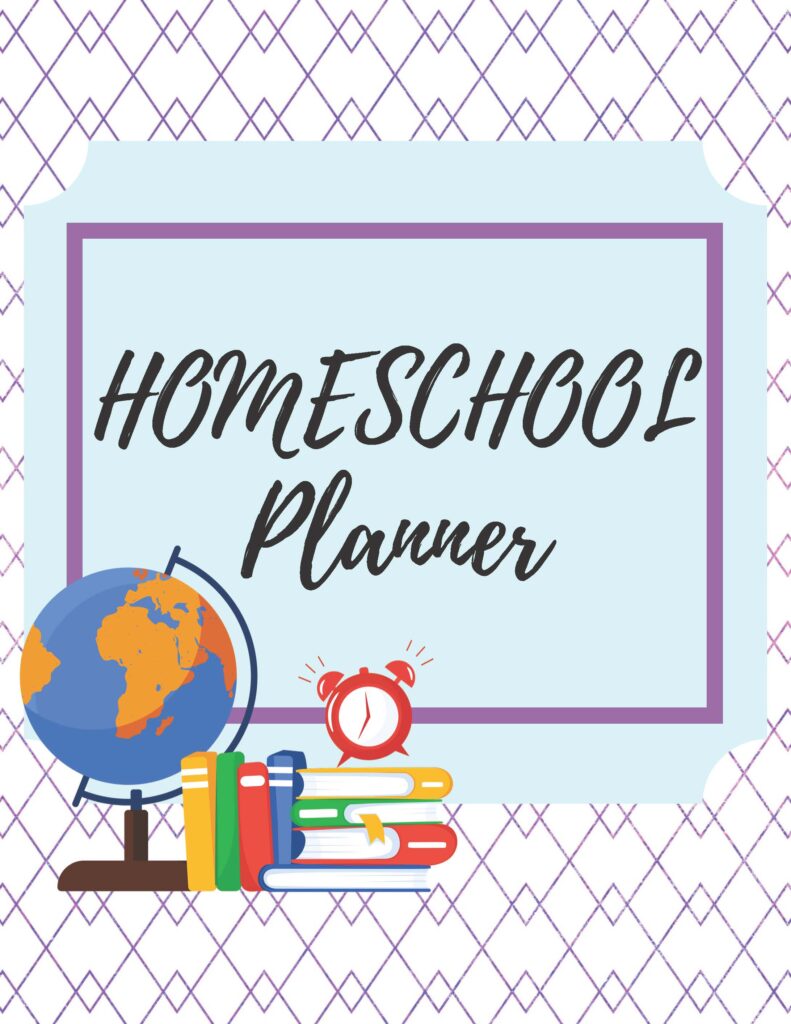
Our homeschool planner includes everything you need to manage your daily routines, weekly goals, and long-term objectives. From attendance sheets to curriculum trackers, we've thought of it all. Plus, with customizable pages, you can tailor the planner to fit your unique homeschooling style and needs.
We understand that homeschooling can be overwhelming at times, which is why we've created this planner to simplify your life. With our free resources, you can spend less time worrying about organization and more time enjoying the learning process with your children. Let's make this homeschool year the best one yet!
Free Printable Homeschool Planner: Organize Your Child's Education with Ease
Choosing Your Planner Format
When selecting a homeschool planner, it's essential to consider the format that best suits your needs and preferences. The right choice can make organizing your homeschool journey much easier and more enjoyable.
Digital vs. Printable Planners
Digital planners offer flexibility and convenience. We love how they allow for easy editing and syncing across devices. Many digital homeschool planners come with customizable templates and automatic calculations for grades and attendance.
On the other hand, printable planners have their own charm. We find them perfect for those who prefer a tangible, screen-free option. They're great for visual learners and can be easily customized with colored pens or stickers.
Both formats have their merits:
- Digital: Editable, portable, eco-friendly
- Printable: Tactile, no battery required, easily customizable
Ultimately, the choice depends on your personal style and homeschooling approach.
3-Ring Binder Organization
A 3-ring binder system is a versatile option for homeschool planning. We appreciate how it allows us to add, remove, or rearrange pages as needed.
Here's how we typically organize a 3-ring binder planner:
- Calendar section
- Weekly lesson plans
- Attendance records
- Grade tracking sheets
- Subject-specific sections
Using dividers with tabs makes navigation a breeze. We also love adding clear plastic sleeves for storing loose papers or important documents.
Remember, the key to a successful 3-ring binder planner is regular maintenance. Set aside time each week to update and reorganize your binder for optimal efficiency.
Setting Up Your Homeschool Planner
Creating an effective homeschool planner is crucial for a successful academic year. We'll guide you through organizing your yearly overview, setting up monthly calendars, and crafting weekly planning outlines to keep your homeschooling journey on track.
Yearly Overview Planning
Let's start with the big picture. A year-at-a-glance calendar is essential for mapping out your homeschool plan. We recommend using a large wall calendar or a dedicated yearly planner page.
Mark important dates such as:
- First and last days of your school year
- Holidays and breaks
- Field trips and special events
- Testing days (if applicable)
Color-coding different subjects or activities can help you visualize the year ahead. Don't forget to include any extracurricular activities or family commitments that might affect your homeschool schedule.
Monthly Calendar Setup
Monthly calendars are the backbone of your homeschool planner. We suggest using a two-page spread for each month to give you plenty of space. Here's what to include:
- Daily boxes for lesson plans and assignments
- Space for monthly goals and focus areas
- A section for tracking progress and achievements
Consider using printable monthly calendars that you can customize. Add stickers or colored pens to make your planner visually appealing and easy to navigate.
Remember to schedule regular review days to assess your progress and make any necessary adjustments to your plans.
Weekly Planning Outline
Weekly planning is where the rubber meets the road in homeschooling. We recommend creating a template that includes:
- Daily subject blocks
- To-do lists for each child
- Space for meal planning and chores
- A notes section for ideas and observations
Use a weekly planner printable to get started. Customize it to fit your family's unique needs and learning styles.
Be flexible with your weekly plans. Leave some wiggle room for unexpected events or days when a topic needs more time than anticipated. It's okay to adjust as you go!
Daily Schedules and Routines
Creating a structured daily plan and establishing consistent routines are key to successful homeschooling. We'll explore how to craft an effective schedule and implement helpful habits to keep your homeschool days running smoothly.
Crafting a Daily Schedule
A well-designed daily schedule is the backbone of productive homeschooling. We recommend starting with free printable daily planning pages to organize your family's activities. Begin by blocking out time for core subjects like math and reading in the morning when focus is typically highest.
Include regular breaks for snacks, physical activity, and rest. This helps maintain energy and enthusiasm throughout the day. Don't forget to allot time for creative pursuits, hands-on projects, and outdoor exploration.
Flexibility is crucial. Leave some open slots for unexpected learning opportunities or to extend lessons that capture your children's interest. Remember, a schedule should serve as a helpful guide, not a rigid constraint.
Establishing Routines
Consistent routines create a sense of stability and make transitions smoother. We suggest starting each day with a morning meeting to review the schedule, set goals, and address any concerns. This sets a positive tone for learning.
Implement a daily routine for tidying up after activities. This teaches responsibility and keeps your learning space organized. Create rituals around starting and ending the school day, like reciting a favorite poem or sharing gratitude.
Establish homework and independent study habits early on. Designate a specific time and quiet space for these tasks. This fosters self-discipline and time management skills.
Remember to include routines for self-care and family time. Regular exercise, outdoor play, and shared meals contribute to overall well-being and strengthen family bonds.
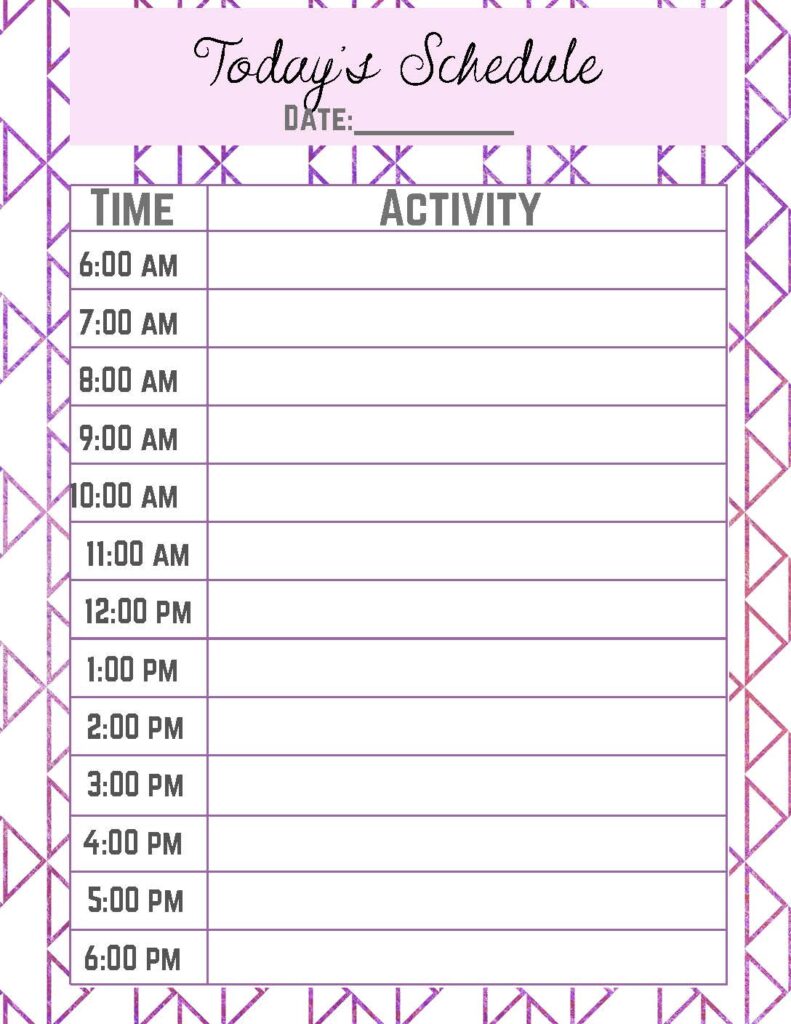
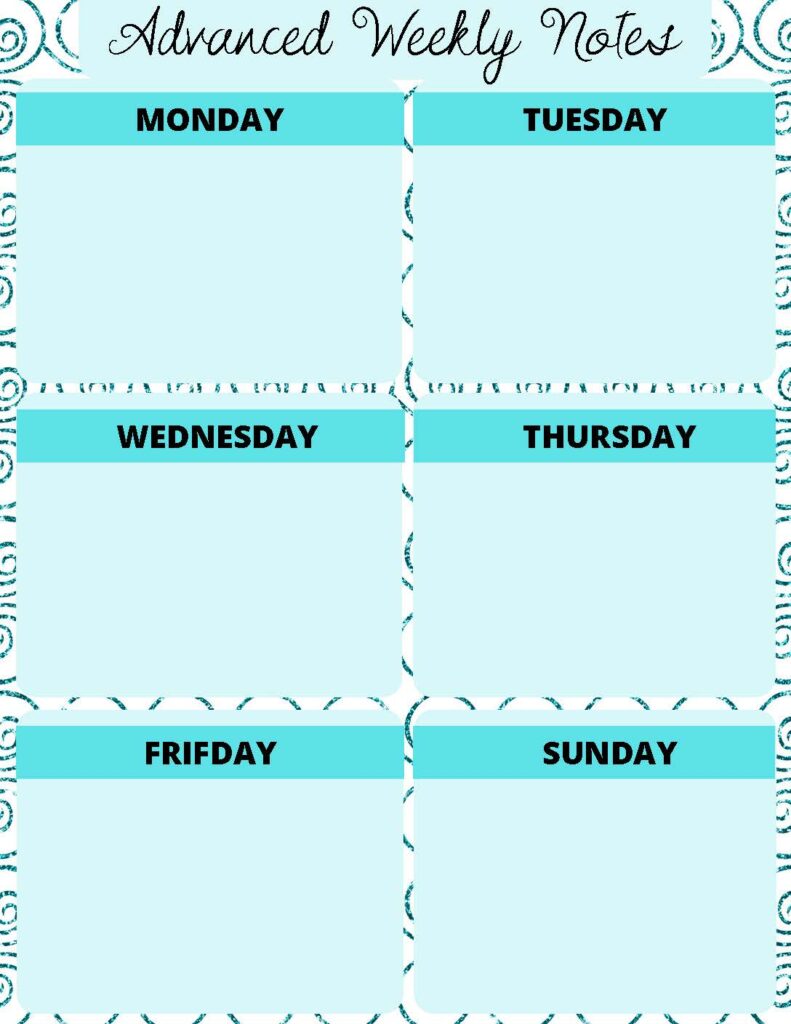
Educational Goals and Progress Tracking
Setting clear objectives and monitoring your homeschool journey are crucial for success. We'll explore how to establish meaningful goals and track your child's progress effectively.
Setting Academic and Personal Goals
Let's start by defining what we want to achieve. We recommend creating a mix of academic and personal goals for each child. Academic goals might include mastering multiplication tables or reading 20 books this year. Personal goals could focus on developing time management skills or improving public speaking abilities.
We suggest using the SMART method:
- Specific
- Measurable
- Achievable
- Relevant
- Time-bound
This approach helps us create clear, actionable goals. We can then break these down into smaller milestones in our lesson plans.
Remember to involve your children in this process. It gives them ownership and motivates them to work towards their goals.
Monitoring Progress and Achievements
Tracking progress is essential to stay motivated and adjust our teaching methods if needed. We can use various tools to monitor advancement:
- Regular assessments
- Portfolio reviews
- Progress charts
- Learning journals
We recommend weekly check-ins to discuss what's working well and areas for improvement. This helps us catch any struggles early and celebrate successes along the way.
It's also beneficial to document achievements. We can create a special section in our homeschool planner to record milestones, completed projects, and new skills learned. This visual representation of progress can be incredibly encouraging for both parents and children.
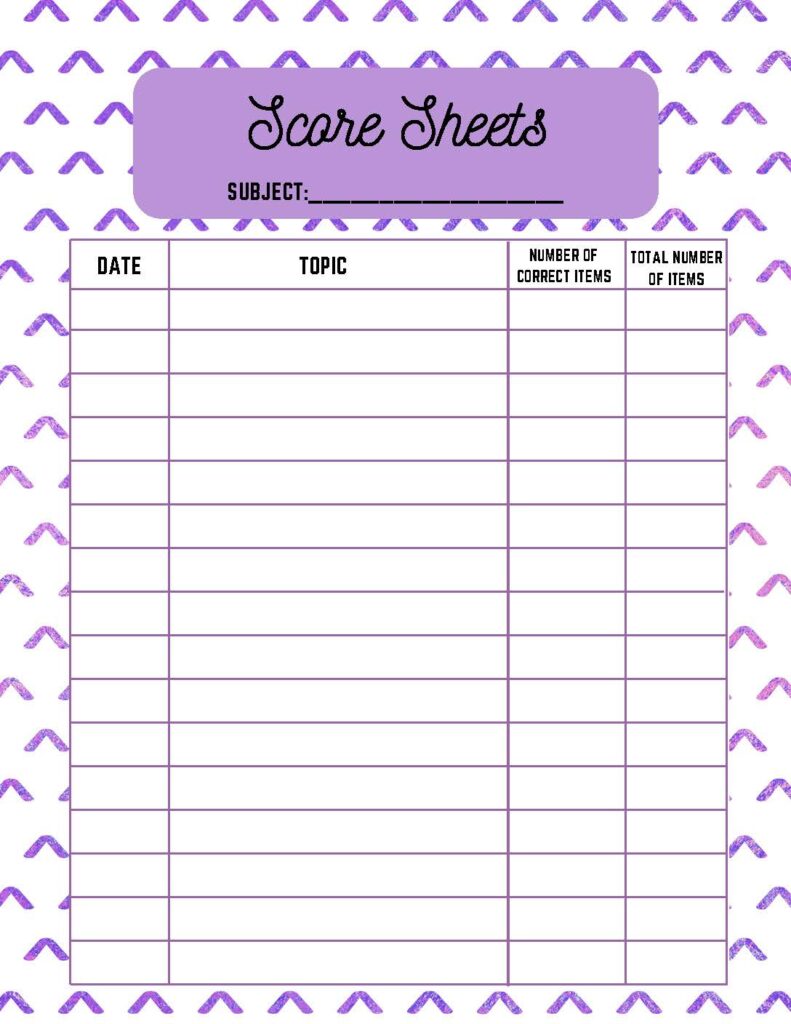
Curriculum Planning
Planning your homeschool curriculum is crucial for a successful academic year. We'll explore how to choose the right curriculum and create a yearly overview to keep your family on track.
Selecting Your Curriculum
Choosing the right homeschool curriculum can be overwhelming, but we're here to help! Start by considering your child's learning style and your teaching preferences.
Are they visual learners? Hands-on? Do you prefer structured or flexible approaches? Make a list of subjects you want to cover and research curriculum options for each.
Don't forget to check state requirements to ensure you're meeting educational standards. We recommend reading reviews from other homeschool families and attending curriculum fairs if possible.
Remember, it's okay to mix and match curricula from different providers to create the perfect fit for your family. Keep your budget in mind, and don't be afraid to try free resources or used materials to save money.
Yearly Curriculum Overview
Once we've selected our curriculum, it's time to create a yearly overview. This big-picture plan helps us stay on track throughout the school year.
Start by listing your subjects and the main topics you'll cover in each. Break these down into monthly or quarterly goals. Here's a simple table to help organize your thoughts:
| Subject | Q1 Goals | Q2 Goals | Q3 Goals | Q4 Goals |
|---|---|---|---|---|
| Math | ||||
| Science | ||||
| History |
Be sure to include any field trips, projects, or special activities in your yearly plan. This overview will guide your weekly and daily lesson plans.
We recommend using a curriculum planner to keep everything organized. Many free printable options are available online, or you can create your own using a simple spreadsheet.
Lesson Planning and Resource Organization
Effective lesson planning and resource organization are crucial for successful homeschooling. We've designed our planner to help you stay on top of weekly schedules, track materials, and integrate unit studies seamlessly.
Weekly Lesson Plans
Our weekly lesson planner pages make it easy to map out your homeschool days. We've included spaces for each subject, allowing you to jot down topics, assignments, and goals for the week ahead.
You'll find:
- Customizable time slots
- Areas for daily objectives
- Checkboxes for completed tasks
We've also added a notes section for reminders or adjustments. This flexible layout adapts to various homeschooling styles, whether you prefer structured days or a more relaxed approach.
Resource and Material Lists
Keeping track of books, supplies, and educational resources is simple with our dedicated list pages. We've created sections for:
- Required textbooks
- Supplementary reading materials
- Art supplies
- Science experiment materials
You can easily mark items as purchased or borrowed. We've included a book list feature to help you plan your literature curriculum and track reading progress throughout the year.
Unit Study Planner Integration
Our unit study planner seamlessly integrates with weekly plans, allowing for in-depth exploration of specific topics. We've designed it to help you:
- Outline main concepts and learning objectives
- List related activities and field trips
- Schedule multi-subject lessons around a central theme
This integration ensures your unit studies align with your overall curriculum goals. We've included space to note resources, allowing you to gather materials in advance and stay organized throughout the unit.
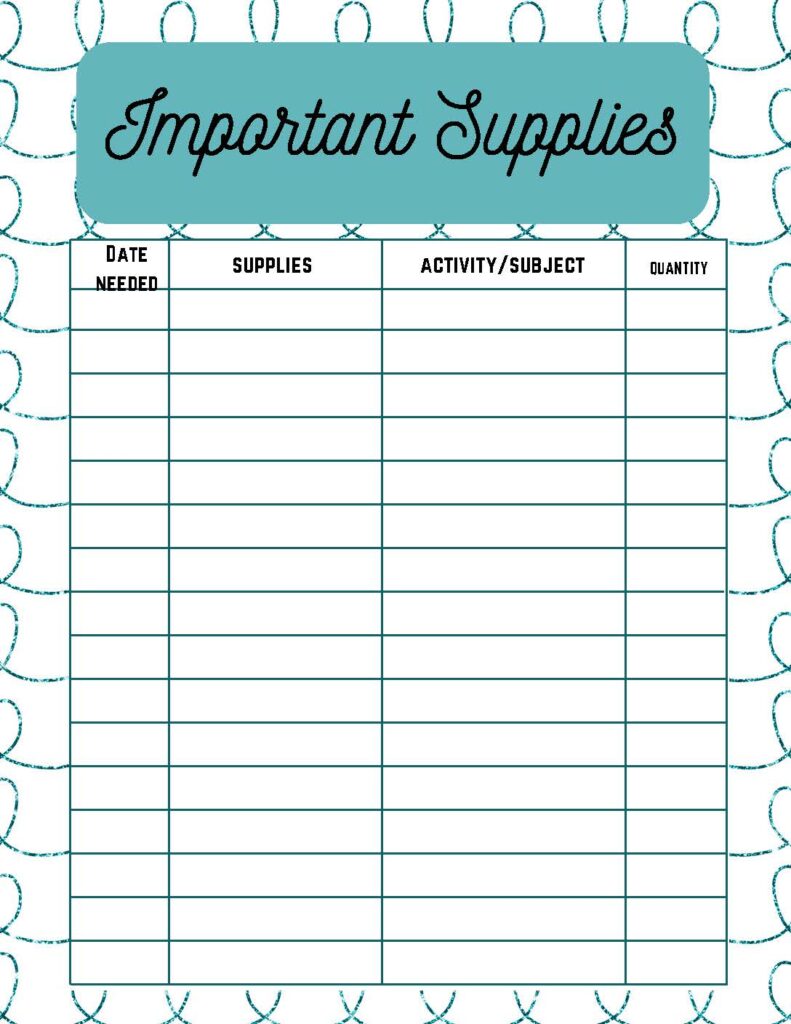
Assignment and Homework Management
Effective assignment and homework management is crucial for homeschool success. We'll explore how to track assignments and create homework schedules to keep your homeschool on track.
Tracking Assignments
We love using printable assignment trackers to stay organized. These handy sheets let us record due dates, subjects, and task descriptions all in one place. We recommend color-coding assignments by subject for quick visual reference.
For long-term projects, we break them down into smaller milestones. This helps prevent last-minute cramming and reduces stress for both parents and students.
Don't forget to celebrate completed assignments! We use stickers or checkmarks to mark finished tasks, giving a sense of accomplishment.
Homework Schedules
Creating a consistent homework routine is key to our homeschool success. We designate specific times each day for homework, aligning with our children's peak focus hours.
Our weekly plan includes:
- Morning review sessions
- Afternoon study blocks
- Evening reading time
We use a student planner to help our kids take ownership of their schedules. This teaches valuable time management skills they'll use throughout life.
Remember, flexibility is important! We adjust our homework schedules as needed to accommodate field trips, special projects, or unexpected events.
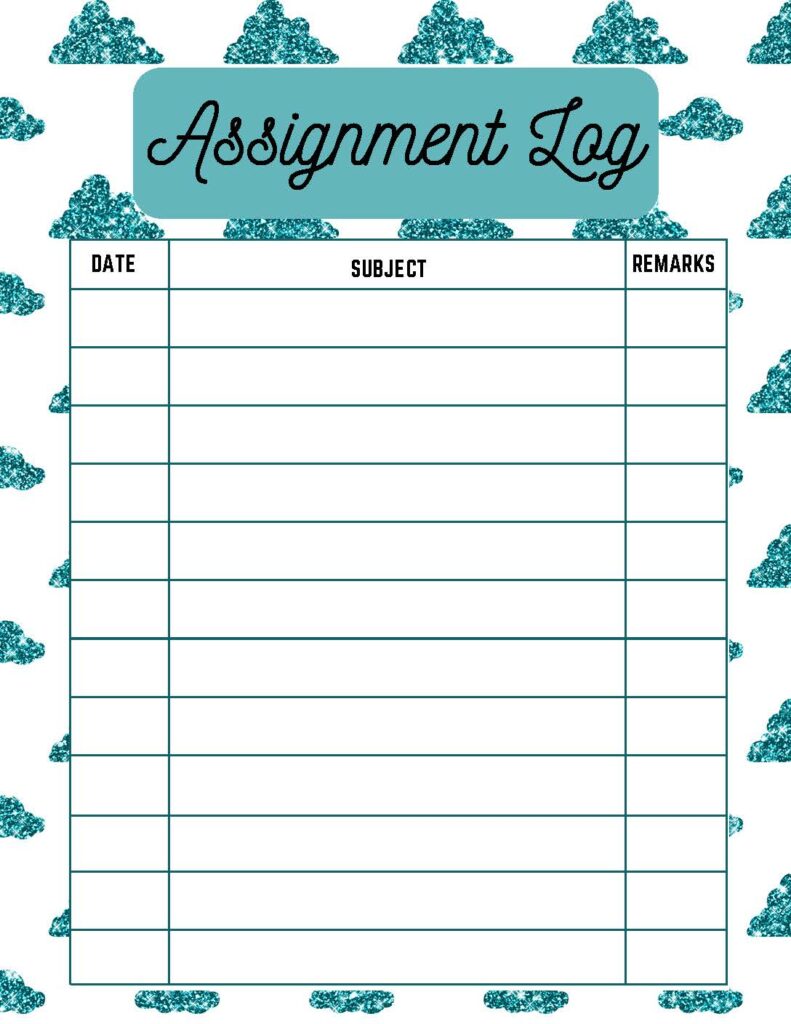
Record Keeping and Compliance
Keeping accurate records is crucial for homeschooling families. We'll explore how to track attendance, log grades, and develop a comprehensive homeschool portfolio.
Attendance and Grade Logs
We recommend using an attendance tracker to maintain consistent records. This simple tool helps us stay on top of our homeschool schedule and ensures compliance with local regulations.
Creating a grade log is equally important. We can use a spreadsheet or a dedicated homeschool planner to record grades throughout the homework year.
It's helpful to set up a weekly routine for updating these logs. This way, we won't forget important details or fall behind on our record-keeping duties.
Some families prefer digital tools, while others opt for paper-based systems. Either way, the key is consistency and accuracy in our documentation.
Homeschool Portfolio Development
A homeschool portfolio is a comprehensive collection of our child's work and achievements. We can include samples of completed assignments, project photos, and test results.
Organizing the portfolio by subject makes it easy to track progress across different areas. We might also include a list of books read, field trips taken, and extracurricular activities.
Regularly updating the portfolio throughout the year saves us time and stress later. We can set aside a folder or digital space for each child to collect materials as we go.
Many families find it helpful to include a summary of learning objectives and how they were met. This demonstrates our commitment to providing a well-rounded education.
Additional Planning Tools
A comprehensive homeschool planner goes beyond daily schedules and lesson plans. We've included extra tools to help you organize reading, activities, and meals for a well-rounded homeschool experience.
Reading and Book Lists
Reading is a crucial part of any homeschool curriculum. We've incorporated reading logs and book lists into our planner to help you track your children's literary progress. Use these tools to:
• Set reading goals for each child • Record books completed and pages read • Create themed book lists for different subjects • Plan literature-based unit studies
We suggest using color-coding to differentiate between required reading and pleasure reading. This visual distinction can motivate kids to explore books beyond their assignments.
Field Trip and Activity Planning
Hands-on experiences are invaluable in homeschooling. Our planner includes dedicated spaces for planning field trips and activities. Here's how to make the most of these sections:
• Brainstorm a list of potential field trip locations • Schedule activities to complement your current lessons • Track admission fees and other costs • Note important details like address and contact information
We recommend planning at least one field trip or special activity per month to keep learning exciting and engaging.
Meal and Snack Planning
Proper nutrition fuels learning, so we've included a meal and snack planning section in our homeschool planner. Use this area to:
• Plan healthy breakfasts and lunches for school days • Organize snack ideas for mid-morning and afternoon breaks • Create a grocery list based on your meal plan • Involve kids in meal planning and preparation as part of life skills education
We suggest batch-cooking some items on weekends to save time during busy homeschool days. Don't forget to plan for easy, grab-and-go options for days filled with outside activities or field trips.
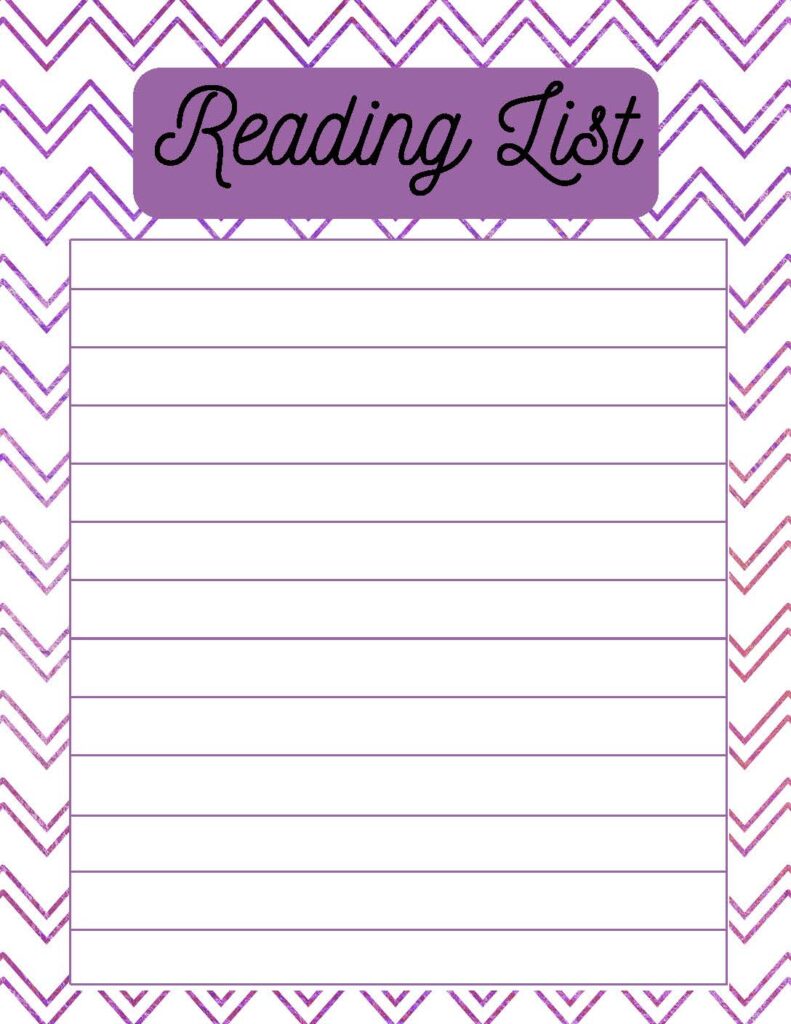
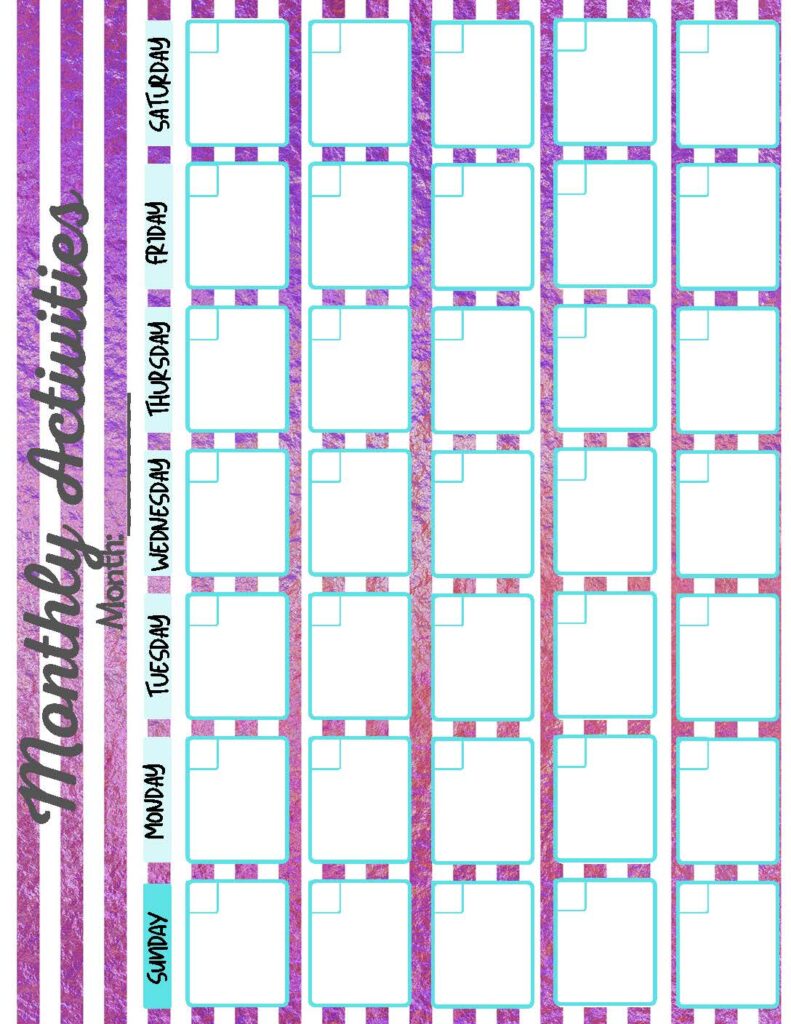
Personalization and Creativity
A personalized homeschool planner allows us to infuse our unique style and educational approach into our daily routines. We can make our planners both functional and inspiring with a few simple touches.
Customizing Your Planner
We love the flexibility of a printable homeschool planner. It's a blank canvas for our creativity! We can start by choosing colorful paper or adding decorative borders to our pages.
Stickers, washi tape, and colored pens are great for highlighting important dates or subjects. We might use different colors for each child or subject to make our schedules easy to read at a glance.
Don't forget to include space for our children's input. They can decorate their own weekly pages or add stickers for completed tasks. This personal touch helps them feel more invested in their learning journey.
Inspirational and Educational Quotes
Adding inspirational quotes to our planner can boost motivation on tough days. We can choose quotes that align with our family's values or educational philosophy.
Educational facts or trivia make great additions too. We might include a “fact of the week” related to what we're studying. This adds an extra learning opportunity to our daily planning routine.
Pinterest is a fantastic resource for finding quote printables and educational snippets to add to our planners. We can even create a board dedicated to planner inspiration!
Community and Support Resources
Homeschooling families can benefit greatly from connecting with others and accessing valuable resources. We've found that building a support network and tapping into community knowledge can make the homeschooling journey much more enjoyable and successful.
Online Communities and Forums
We love how the internet has made it easy to connect with other homeschoolers worldwide. Free homeschool planners are often shared in these online spaces. Facebook groups dedicated to homeschooling are a great place to start. We can ask questions, share experiences, and get advice from seasoned homeschoolers.
Forums like HomeschoolForum.com provide a platform for in-depth discussions on curriculum choices, teaching methods, and legal requirements. We've found these communities invaluable for troubleshooting challenges and celebrating successes together.
Many online communities also offer resource libraries where we can find:
- Printable worksheets
- Lesson plan ideas
- Book lists
- Educational games
Local Homeschooling Groups
In-person connections are just as important as online ones. We encourage families to seek out local homeschooling groups in their area. These groups often organize field trips, co-op classes, and social events.
Local homeschool planners can be shared and customized within these groups. We've found that regular meet-ups at parks or libraries provide opportunities for our children to form friendships and for us to exchange teaching tips.
Many local groups also:
- Arrange group discounts for educational materials
- Organize workshops with guest speakers
- Coordinate homeschool sports teams or clubs
By participating in both online and local communities, we create a robust support system that enhances our homeschooling experience.
